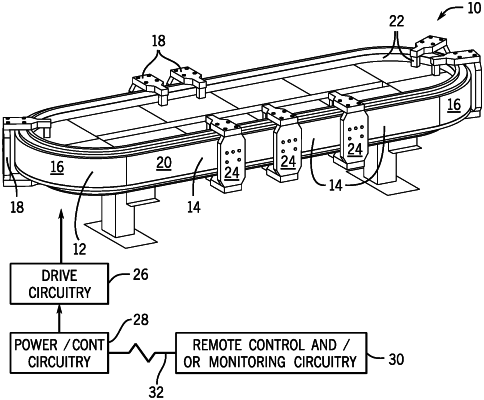| CPC B61K 7/12 (2013.01) [B61B 13/12 (2013.01); B65G 23/22 (2013.01); F16D 63/008 (2013.01); F16D 65/092 (2013.01); F16D 2125/66 (2013.01); F16D 2200/0004 (2013.01); F16D 2200/0034 (2013.01); F16D 2200/0056 (2013.01)] | 20 Claims |

|
1. A brake system for a track section of a linear motor system, the brake system comprising:
a housing configured to receive a brake flag of a mover of the linear motor system;
a first brake pad disposed within the housing and comprising a first tapered surface, wherein the first brake pad is configured to move between a first position and a second position, wherein the first brake pad is configured to engage the brake flag of the mover of the linear motor system in the second position;
a second brake pad disposed within the housing and comprising a second tapered surface, wherein the second brake pad is configured to move between a third position and a fourth position, wherein the second brake pad is configured to engage the brake flag of the mover of the linear motor system in the fourth position;
a wedge disposed within the housing and comprising a third tapered surface configured to interface with the first tapered surface of the first brake pad and a fourth tapered surface configured to interface with the second tapered surface of the second brake pad; and
an actuator configured to, in response to receiving a signal indicative of a loss of power to the linear motor system and receiving a signal indicative of a position of the brake flag, move the wedge between a fifth position and a sixth position, wherein movement of the wedge from the fifth position to the sixth position causes the first brake pad to move from the first position to the second position, and causes the second brake pad to move from the third position to the fourth position.
|